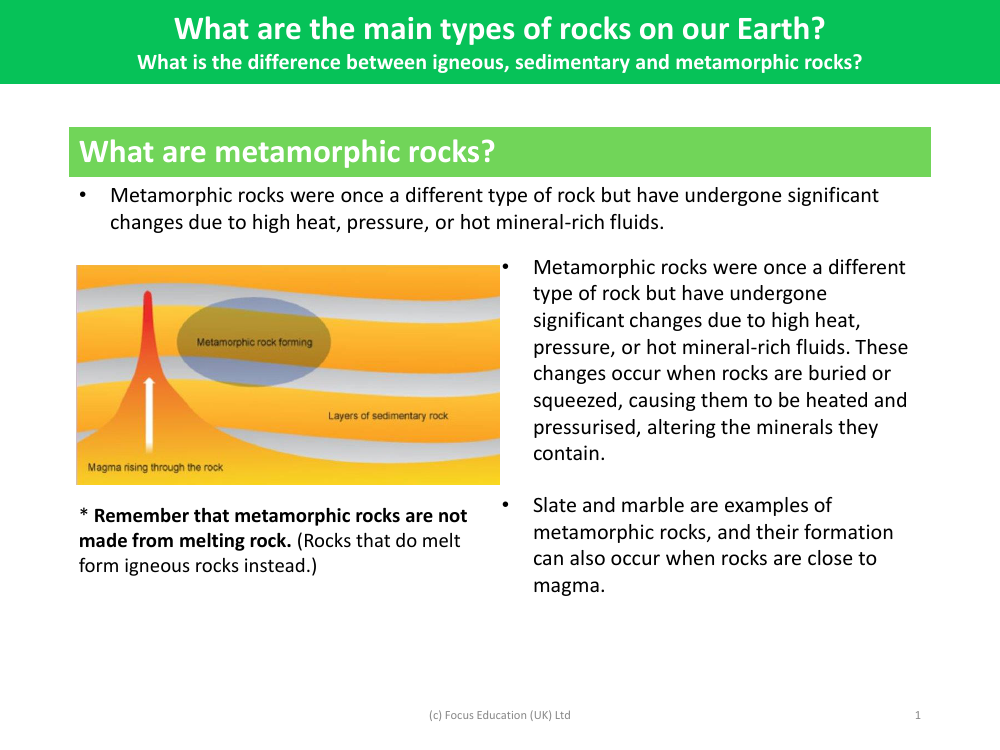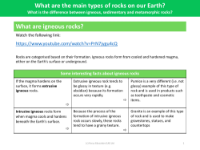Metamorphic rocks - Info sheet

Science Resource Description
Metamorphic rocks are a fascinating group in the family of rocks that grace our planet's surface. Unlike igneous rocks, which are formed from the cooling and solidification of molten rock, metamorphic rocks originate from pre-existing rocks that have been transformed. This transformation is not due to melting but is a result of the rocks being subjected to intense heat, immense pressure, or the action of hot, mineral-rich fluids. These conditions often occur deep within the Earth's crust where rocks can be buried or compressed, leading to a change in their mineral composition and structure, without reaching the melting point.
Examples of metamorphic rocks include slate and marble, each with its own unique story of formation. Slate starts as shale, a sedimentary rock, which under low-grade metamorphism becomes the fine-grained, foliated rock we know. Marble, on the other hand, begins as limestone and transforms under higher grades of metamorphism. The process of metamorphosis can also take place in proximity to magma, where the intense heat can contribute to the alteration of the rock's characteristics. Understanding metamorphic rocks is a key part of distinguishing them from the other main rock types—igneous and sedimentary—each defined by its own mode of formation and distinct properties.






